new posts in all blogs
Viewing: Blog Posts Tagged with: Nazi Germany, Most Recent at Top [Help]
Results 1 - 14 of 14
How to use this Page
You are viewing the most recent posts tagged with the words: Nazi Germany in the JacketFlap blog reader. What is a tag? Think of a tag as a keyword or category label. Tags can both help you find posts on JacketFlap.com as well as provide an easy way for you to "remember" and classify posts for later recall. Try adding a tag yourself by clicking "Add a tag" below a post's header. Scroll down through the list of Recent Posts in the left column and click on a post title that sounds interesting. You can view all posts from a specific blog by clicking the Blog name in the right column, or you can click a 'More Posts from this Blog' link in any individual post.

By: Marissa Lynch,
on 9/7/2016
Blog:
OUPblog
(
Login to Add to MyJacketFlap)
JacketFlap tags:
Religion,
World War II,
nazi germany,
Europe,
Christmas traditions,
St. Nicholas,
Adolf Hitler,
*Featured,
Nazi party,
Christmas in the Crosshairs,
Gerry Bowler,
National Socialists,
Two Thousand Years of Denouncing and Defending the World's Most Celebrated Holiday,
Books,
History,
Christmas,
Add a tag
Christmas is the most widely celebrated festival in the world but in few countries is it valued as deeply as in Germany. The country has given the world a number of important elements of the season, including the Christmas tree, the Advent calendar and wreath, gingerbread cookies, and Bach’s Christmas Oratorio, “Es ist ein Ros` entsprungen,” […]
The post Christmas in Nazi Germany appeared first on OUPblog.

By: KatherineS,
on 8/12/2016
Blog:
OUPblog
(
Login to Add to MyJacketFlap)
JacketFlap tags:
sport,
History,
olympics,
World,
Brazil,
nazi germany,
Hitler,
VSI,
Very Short Introductions,
IOC,
Olympic Games,
2016 Olympics,
*Featured,
Ancient Greeks,
Jesse Owens,
Sports & Games,
Sport: A Very Short Introduction,
international olympic committee,
Mike Cronin,
modern Olympic games,
Olympism,
Pierre de Coubertin,
Add a tag
Enjoying Rio 2016? This extract from Sport: A Very Short Introduction by Mike Cronin gives a history of the modern Olympic games; from its inspiration in the British Public school system, to the role it played in promoting Nazi propaganda. The modern Olympic Games, and their governing body, the International Olympic Committee (IOC), came into being in 1894 and were the brainchild of Pierre de Coubertin. A Frenchman with a passionate interest in education, de Coubertin had visited England.
The post Facing the Führer: Jesse Owens and the history of the modern Olympic games appeared first on OUPblog.
Playing with Matches begins in 1938, when Emil Radle is 9 years-old and a member of the Passau (Germany)
Deutsches Jungvolk, anxiously awaiting the day he will be old enough to join the Hitler Youth and begin to learn how to fly. Emil wants nothing more than to become a pilot in the German
Luftwaffe.
But the
Jungvolk is hard work and the leader, Heinz Schultz, likes to pick on Emil's friend Moritz for being weak. Emil is aware that Moritz and their friend Johann aren't really supporters of the Reich and, in fact, neither are Emil's parents. And maybe Emil isn't either, since he still likes his friend Anne Silbermann, a Jewish girl whose family owned a bakery, and is very upset when he saw what happens to her family on
Kristalnacht.
Even after war is declared in 1939 and the youth leaders and his school teacher continue to speak Nazis rhetoric to the kids, Emil half wants to believe what he hears. Seeing Anne and her mother boarding trains east, he thinks they are being resettled, while Moritz and Johann inform him otherwise. Other incidents begin to cause Emil to question things more, and his belief in Nazi Germany's greatness begins to waver.
In the summer of 1941, when Emil turns 13, he discovers that Johann and Moritz are secretly listening to BBC reports on a shortwave radio. When the reports contradict the Nazi reports on how the war is going, Emil's chasm of doubt in the Fatherland widens. Soon, the boys are joined by Johann's sister Katharina, and all four begin to transcribe the reports and leave them around town for people to read. And Emil begins to notice he has a strong attraction to Katharina.
The friends continue their resistance activities, as it becomes clearer that Germany is really starting to lose the war. Emil's father is sent to Berlin for not joining the Nazi Party and isn't heard from for a very long time. When news breaks about the arrest and beheading of The White Rose group, college students doing something similar to what Emil and his friends are doing, instead of backing down, they continue to distribute their flyers transcribed from the BBC.
Emil's affection for Katharina becomes stronger as time goes by. In the summer of 1944, after he turns 16, Emil finally asks Katharina to marry him and is happy when she says yes. But even though the Germans are losing the war, there is still another year of it left. And it is a treacherous year in which some will survive and some won't.
It's no secret that the Nazis used kids to further their cause, but we don't often get books that look at the lives of those kids. The book covers 7 years in Emil's life, which probably mirrors the experience of many boys and girls at that time. Not everyone was a full, enthusiastic supporter of Hitler and his policies the way the leaders of Emil's
Deutsches Jungvolk or his teacher are, but there were plenty who did. And there is one incident in the novel of a girl in Emil's class turning in her parents for saying something against Hitler and that kind of thing did happen.
That said,
Playing with Matches is a compelling story that really is a chronicle of one boy's life between 1938 and 1945, character driven rather than plot driven. And, we meet a remarkable cast of characters that surround surround Emil's life - from staunch Nazis and bullies, to people caught up in a situation they don't support and their little acts of kindness, generosity and the type of support for each other that the Nazis discouraged, and who, it turns out, are real heroes for staying true to their own values and principles even in the face of a regime grounded in hate and violence.
Playing with Matches is an interesting coming-of-age novel, ideal novel for young readers interested in historical fiction, WWII history and for understanding what life was like in Nazi Germany. It would make a nice companion book to Markus Zusak's novel
The Book Thief.
This book is recommended for readers age 10+
This book was purchased for my personal library


By: JulieF,
on 11/23/2015
Blog:
OUPblog
(
Login to Add to MyJacketFlap)
JacketFlap tags:
Books,
History,
nazi germany,
physics,
Europe,
Albert Einstein,
*Featured,
Physics & Chemistry,
Max Planck,
history of science,
Images & Slideshows,
Science & Medicine,
Planck,
Brandon R. Brown,
100th anniversary general relativity,
Driven by Vision Broken by War,
Einstein and Planck friendship,
relativity theory,
Add a tag
There was much more to Max Planck than his work and research as an influential physicist. For example, Planck was an avid musician, and endured many personal hardships under the Nazi regime in his home country of Germany.
The post Max Planck and Albert Einstein appeared first on OUPblog.

By: Eleanor Jackson,
on 11/22/2015
Blog:
OUPblog
(
Login to Add to MyJacketFlap)
JacketFlap tags:
Books,
History,
mental health,
suicide,
nazi germany,
Europe,
Second World War,
Hitler Youth,
Adolf Hitler,
third reich,
*Featured,
Nazi party,
Psychology & Neuroscience,
Christian Goeschel,
Christian taboo,
heroic self-sacrifice,
Nazi creed,
Nazi ideology,
potassium cyanide,
Red Army,
Suicide in Nazi Germany,
Add a tag
When the US Army took the Saxon city of Leipzig in April 1945, a gruelling scene was revealed inside the town hall. The Nazi treasurer of the city, his wife, and his daughter had all committed suicide. But these suicides were not isolated cases. In the spring of 1945, Nazi Germany went to its end in an unprecedented wave of suicides.
The post Suicide in Nazi Germany in 1945 appeared first on OUPblog.

By: KatherineS,
on 11/20/2015
Blog:
OUPblog
(
Login to Add to MyJacketFlap)
JacketFlap tags:
History,
Religion,
einstein,
politics,
mystery,
fame,
atomic bomb,
Charlie Chaplin,
nazi germany,
theory of relativity,
VSI,
physics,
Europe,
Very Short Introductions,
richard dawkins,
marie curie,
isaac newton,
genius,
Stephen Hawking,
Zionism,
Albert Einstein,
A Very Short Introduction,
relativity,
*Featured,
Physics & Chemistry,
McCarthyism,
Science & Medicine,
Opposition,
VSI online,
genius: a very short introduction,
Add a tag
Albert Einstein’s greatest achievement, the general theory of relativity, was announced by him exactly a century ago, in a series of four papers read to the Prussian Academy of Sciences in Berlin in November 1915, during the turmoil of the First World War. For many years, hardly any physicist—let alone any other type of scientist—could understand it.
The post Einstein’s mysterious genius appeared first on OUPblog.

By: Eleanor Jackson,
on 5/30/2015
Blog:
OUPblog
(
Login to Add to MyJacketFlap)
JacketFlap tags:
History,
nazi germany,
Concentration Camp,
Europe,
prisoners,
Second World War,
forced labor,
*Featured,
Art & Architecture,
Marc Buggeln,
photography subjectivity,
Slave Labor in Nazi Concentration Camps,
submarine construction,
Add a tag
It is absolutely essential to take a critical view of source material when it comes to violent images and war photographs. Photos taken by perpetrators are always an expression of a relationship that is characterized by an imbalance of power between photographers and their subjects.
The post A picture of violence and degradation appeared first on OUPblog.

By: Shelf-employed,
on 2/20/2015
Blog:
Shelf-employed
(
Login to Add to MyJacketFlap)
JacketFlap tags:
harmonicas,
YA,
music,
fairy tale,
book review,
historical fiction,
favorites,
California,
J,
Philadelphia,
orphans,
immigrants,
magical realism,
Nazi Germany,
piano,
Advance Reader Copy,
Add a tag
 If this is how the year is starting out, it's going to be a banner year for middle-grade books. First, Gordon Korman's Masterminds (more on that fantastic new thriller another day) and now Echo: A Novel.
If this is how the year is starting out, it's going to be a banner year for middle-grade books. First, Gordon Korman's Masterminds (more on that fantastic new thriller another day) and now Echo: A Novel.
Ryan, Pam Muñoz. 2015. Echo: A Novel. New York: Scholastic.
I received an Advance Reader Copy of Echo from Scholastic and was intrigued that it was wrapped in musical notation paper and had a smartly-boxed Hohner Blues Band harmonica tied to it.
I was happy to see an apparently music-related book, and what somewhat surprised to find that Echo begins with a fairytale, "The Thirteenth Harmonica of Otto Messenger," a fairytale replete with abandoned princesses, a magical forest, a mean-spirited witch, and a prophecy,
"Your fate is not yet sealed. Even in the darkest night, a star will shine, a bell will chime, a path will be revealed."
Though brief, I became enthralled with the tale and was surprised and taken aback when I reached Part One and found myself not in the fairytale forest, but in
Trossingen, Baden-Württemberg, Germany, 1933, home to the
world's oldest harmonica manufacturer. I couldn't wait to find out what became of the abandoned princesses, but soon found myself wrapped up in the story of young Friedrich Schmidt, a German Jew during Hitler's ascendance to power. This kind-hearted, young boy of a musical family was surely destined to be gathered up in the anti-Semitic wave sweeping through Germany. I became engrossed in Friedrich's story, anxiously hoping that things would work out for him and his family, and was again surprised when I reached Part Two and found myself in
Philadelphia, 1935, home of the then-famous
Albert Hoxie and the Philadelphia Harmonica Band, and of the Bishop's Home for Friendless and Destitute Children, where I found myself in the company of piano-playing orphans, Mike and Frankie Flannery. Their story was no less heart-wrenching than Friedrich's, and I found myself desperately rooting for the young boys when I suddenly arrived
in a migrant worker's community in Southern California, 1942, where young Ivy Maria Lopez was about to play her harmonica on the Colgate Family Hour radio show, but her excitement was short-lived. I fell in with this hard-working, American family and hoped, along with Ivy, for her brother's safe return from the war.
Of course, there's more, but this is where I will leave off.
Pam Muñoz Ryan has written a positively masterful story that will take the reader from the realm of magic through the historical travails of the infirm, the oppressed, and the poor in the midst of the 20th century. Through it all, music gathers the stories together in a symphony of hope and possibility. In music, and in
Echo, there is a magic that will fill your soul.
It may only be February, but I predict that praise for
Echo will continue throughout the year.
On a library shelf near you - February 24, 2015.

Even before he seized power and became the chancellor of Germany in 1933, Hitler had done two things that most people seeking political office rarely did at that time - first was that he used a private plane with his own pilot to campaign quickly all over Germany. The plane was so much faster than a train or car, and much less tiring. The second thing he did was to have a personal photographer to record his every move. That photographer was Heinrich Hoffmann.
You probably know, if only from reading
The Extra by Kathryn Lasky, that Leni Riefenstahl made several propaganda films, but her most famous film of all was Triumph of the Will (
Triumph des Willens) documenting the 1934 Nuremberg Rally and showcasing Hitler. She was a talented and innovative filmmaker, and a good friend of Hitler's (despite later denials of not knowing anything about was was happening in Nazi Germany and the occupied countries), but for still photography, it was Heinrich Hoffmann that Hitler wanted.
Hoffman was a very talented photographer, who loved to take pictures of people in moments when their guard was down, and recording their spontaneous actions/reactions. But he was also gifted at the posed photograph and the iconic June 1940 photograph he took of Hitler standing in front of the Eiffel Tower, flanked on one side by Albert Speer and on the other by Arno Breker, is the one that Don Nardo has chosen to focus on in his book
Hitler in Paris. It is this photograph that best represents Hitler's dominance in Europe. Standing at the Eiffel Tower, in a now defeated France, and with conquered countries to the North, South and East of France, Hitler's sights are now to the West and Britain. One can only imagine how people must have felt when they saw this photo. But what brought Hitler and Hoffmann to this point?
Nardo gives the reader a parallel history of each man early life - both middle class, but with very different family circumstances. Events in Hitler's early life, a cruel father with whom he often fought, held feed his anger and hate at those more fortunate, and was later spurred on and fueled by Germany's defeat in World War I, for which he desperately wanted to seek revenge.
Hoffmann, by contrast, was taken under his father's wing and taught the art of photography. Nardo describes Hoffmann as a very likable man, who claimed (like Riefenstahl) that he was not political, his relationship with Hitler was strictly personal and he had no knowledge of what was happening around him. Eva Braun worked in his photography studio and it was Hoffmann who introduced her to Hitler (you may recall that from reading
Prisoner of Night and Fog by Anne Blankman).
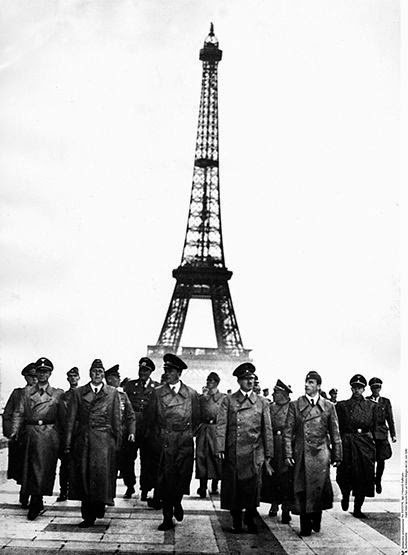 |
Taken on the same trip to Paris by
Hoffmann |
This is a short, 64 page book that is filled with information and photographs, all taken by Hoffmann.
Nardo has done a pretty good job at presenting these two men with objectivity and allowing the reader to draw their own conclusions about them and the circumstances depicted in the book.
Nardo also used lots of primary and secondary sources to write
Hitler in Paris, giving the book a real sense of time an place, as well bringing these two controversial figures to life. Additionally, he has included a useful timeline, a glossary, a list of additional resources, source notes and a selected bibliography. There are also copious photographs of Hoffmann's, which are all now in the public domain.
Hitler in Paris: How a Photograph Shocked a Word at War will probably have great appeal to history buffs interested in the 20th century, WWII, and/or Nazi Germany. But it will also appeal to serious serious budding photographers and even to those who are more experienced as a study in how one emblematic photograph can convey so much.
This book is recommended for readers age 9+
This book was purchased for my personal library


By: Nicola,
on 12/13/2012
Blog:
OUPblog
(
Login to Add to MyJacketFlap)
JacketFlap tags:
History,
WWII,
einstein,
Holocaust,
World,
jews,
atomic bomb,
roosevelt,
Military,
nazi germany,
Europe,
Second World War,
Gordon Fraser,
Jewish history,
*Featured,
Physics & Chemistry,
history of science,
Science & Medicine,
neutron,
civil service law,
german science,
nuclear fission,
nuclear physics,
szilard,
birkenau,
Add a tag
By Gordon Fraser
When the Nazis came to power in Germany in 1933, neither the Atomic Bomb nor the Holocaust were on anybody’s agenda. Instead, the Nazi’s top aim was to rid German culture of perceived pollution. A priority was science, where paradoxically Germany already led the world. To safeguard this position, loud Nazi voices, such as Nobel laureate Philipp Lenard, complained about a ‘massive infiltration of the Jews into universities’.
The first enactments of a new regime are highly symbolic. The cynically-named Law for the Restoration of the Civil Service, published in April 1933, targeted those who had non-Aryan, ‘particularly Jewish’, parents or grandparents. Having a single Jewish grandparent was enough to lose one’s job. Thousands of Jewish university teachers, together with doctors, lawyers, and other professionals were sacked. Some found more modest jobs, some retired, some left the country. Germany was throwing away its hard-won scientific supremacy. When warned of this, Hitler retorted ‘If the dismissal of [Jews] means the end of German science, then we will do without science for a few years’.
Why did the Jewish people have such a significant influence on German science? They had a long tradition of religious study, but assimilated Jews had begun to look instead to a radiant new role-model. Albert Einstein was the most famous scientist the world had ever known. As well as an icon for ambitious young students, he was also a prominent political target. Aware of this, he left Germany for the USA in 1932, before the Nazis came to power.
How to win friends and influence nuclear people
The talented nuclear scientist Leo Szilard appeared to be able to foresee the future. He exploited this by carefully cultivating people with influence. In Berlin, he sought out Einstein.
Like Einstein, Szilard anticipated the Civil Service Law. He also saw the need for a scheme to assist the refugee German academics who did not. First in Vienna, then in London, he found influential people who could help.
Just as the Nazis moved into power, nuclear physics was revolutionized by the discovery of a new nuclear component, the neutron. One of the main centres of neutron research was Berlin, where scientists saw a mysterious effect when uranium was irradiated. They asked their former Jewish colleagues, now in exile, for an explanation.
The answer was ‘nuclear fission’. As the Jewish scientists who had fled Germany settled into new jobs, they realized how fission was the key to a new source of energy. It could also be a weapon of unimaginable power, the Atomic Bomb. It was not a great intellectual leap, so the exiled scientists were convinced that their former colleagues in Germany had come to the same conclusion. So, when war looked imminent, they wanted to get to the Atomic Bomb first. One wrote of ‘the fear of the Nazis beating us to it’.
Szilard, by now in the US, saw it was time to act again. He knew that President Roosevelt would not listen to him, but would listen to Einstein, and wrote to Roosevelt over Einstein’s signature.
When a delegation finally managed to see him on 11 October 1939, Roosevelt said “what you’re after is to see that the Nazis don’t blow us up”. But nobody knew exactly what to do. The letter had mentioned bombs ‘too heavy for transportation by air’. Such a vague threat did not appear urgent.
But in 1940, German Jewish exiles in Britain realized that if the small amount of the isotope 235 in natural uranium could be separated, it could produce an explosion equivalent to several thousand tons of dynamite. Only a few kilograms would be needed, and could be carried by air. The logistics of nuclear weapons suddenly changed. Via Einstein, Szilard wrote another Presidential letter. On 19 January 1942, Roosevelt ordered a rapid programme for the development of the Atomic Bomb, the ‘Manhattan Project’.
Across the Atlantic, the Germans indeed had seen the implications of nuclear fission. But its scientific message had been muffled. Key scientists had gone. Germany had no one left with the prescience of Szilard, nor the political clout of Einstein. The Nazis also had another priority. On 20 January, one day after Roosevelt had given the go-ahead for the Atomic Bomb, a top-level meeting in the Berlin suburb of Wannsee outlined a “final solution of the Jewish Problem”. Nazi Germany had its own crash programme.
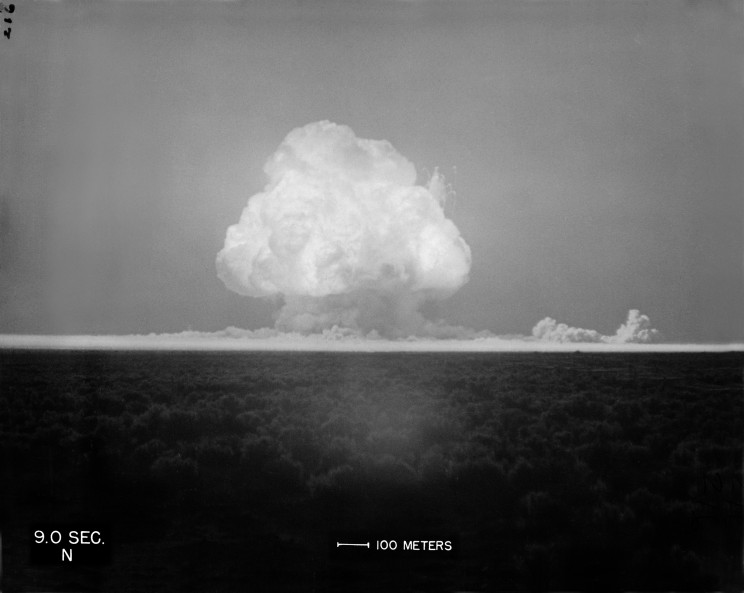
US crash programme – on 16 July 1945, just over three years after the huge project had been launched, the Atomic Bomb was tested in the New Mexico desert.
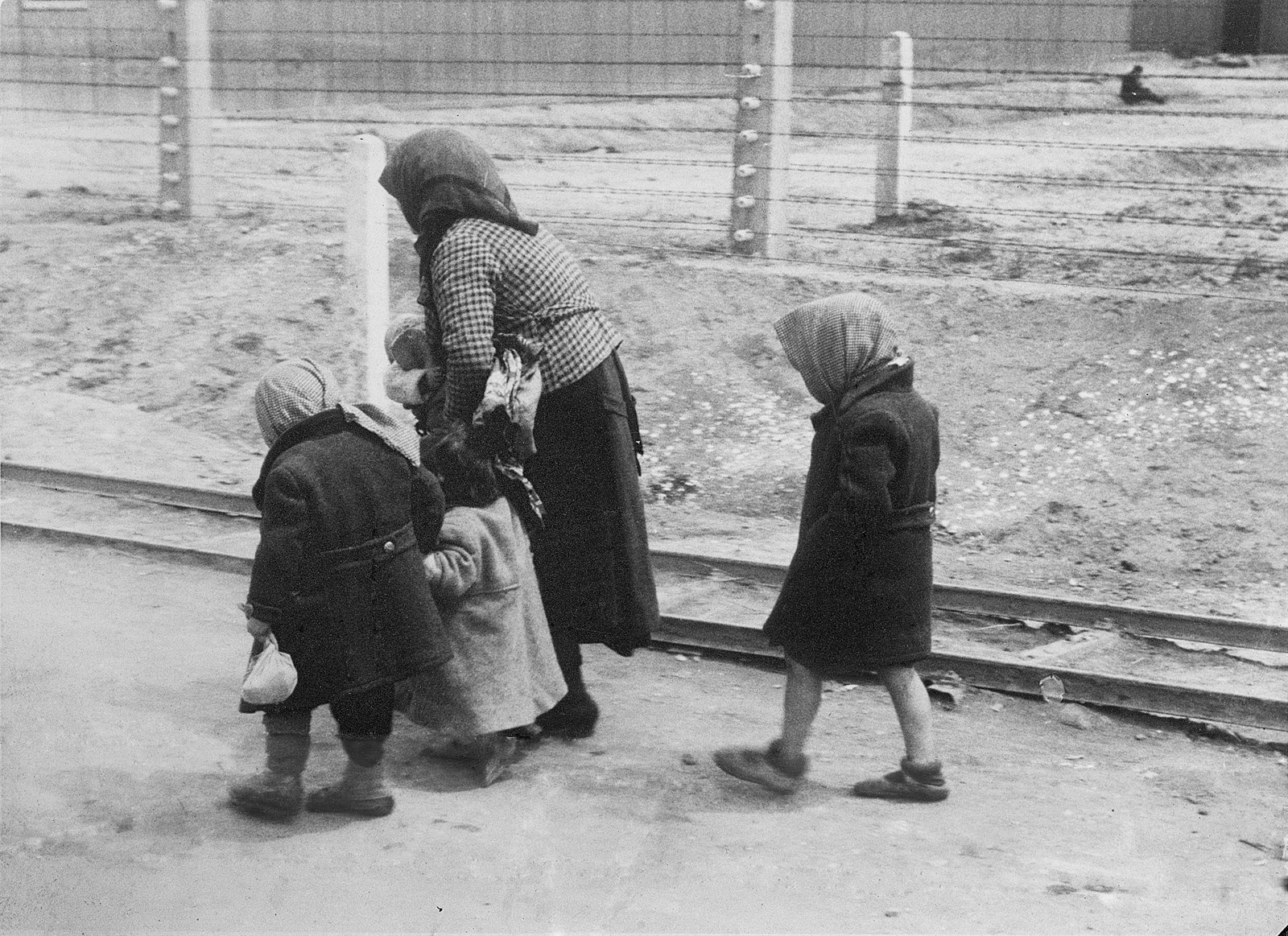
Nazi crash programme – what came to be known as the Holocaust rapidly got under way. Here a doomed woman and her children arrive at the specially-built Auschwitz-Birkenau extermination centre.
As such, two huge projects, unknown to each other, emerged simultaneously on opposite sides of the Atlantic. The dreadful schemes forged ahead, and each in turn became reality. On two counts, what had been unimaginable no longer was.
Gordon Fraser was for many years the in-house editor at CERN, the European Organization for Nuclear Research, in Geneva. His books on popular science and scientists include Cosmic Anger, a biography of Abdus Salam, the first Muslim Nobel scientist, Antimatter: The Ultimate Mirror, and The Quantum Exodus. He is also the editor of The New Physics for the 21st Century and The Particle Century.
Subscribe to the OUPblog via email or RSS.
Subscribe to only history articles on the OUPblog via email or RSS.
Subscribe to only physics and chemistry articles on the OUPblog via email or RSS.
Image credits: Atomic Bomb tested in the New Mexico desert. Photograph courtesy of Los Alamos National Laboratory; Auschwitz-Birkenau, alte Frau und Kinder, Bundesarchiv Bild, Creative Commons License via Wikimedia Commons.
The post How Nazi Germany lost the nuclear plot appeared first on OUPblog.


By: Maryann Yin,
on 11/30/2011
Blog:
Galley Cat (Mediabistro)
(
Login to Add to MyJacketFlap)
JacketFlap tags:
Celebrities,
Adaptation,
Nazi Germany,
Berlin,
Tom Hanks,
Erik Larson,
Gary Goetzman,
In the Garden of Beasts,
Martha Dodd,
William Dodd,
Add a tag
 Universal Studios has acquired the movie rights for In the Garden of Beasts: Love, Terror and an American Family in Hitler’s Berlin by Erik Larson.
Universal Studios has acquired the movie rights for In the Garden of Beasts: Love, Terror and an American Family in Hitler’s Berlin by Erik Larson.
According to The Hollywood Reporter, Oscar winner Tom Hanks and his producing partner Gary Goetzman may produce the project. Hanks could star in the movie as well.
Here’s more from the article: “The book tells the true tale of William Dodd, the United States’ reluctant and mild-mannered ambassador to Berlin in 1933, and his daughter Martha, a vivacious socialite who had romantic affairs with a Gestapo official and a Soviet spy.”
continued…
New Career Opportunities Daily: The best jobs in media.
The
Sydney Taylor Book Award Blog Tour, sponsored by the
Association of Jewish Libraries, kicks off today! One of the Honor Award Winners for Older Readers is
Resistance by Carla Jablonski with art by Leland Purvis (First Second, an imprint of Macmillan Children’s Publishing Group)
SE: I’m always curious about the manner in which great books are created. In graphic novels and nonfiction, is the story generally written in its entirety before the artwork is conceived, is it a collaborative effort, or something completely different?
LP: Not all graphic novels are made the same way. In the case where the writer and artist are different people, often the working method grows out of the creators themselves, and the skills they bring to the table. In this case Carla did a full script but (unusual in comics) no panel-by-panel descriptions. The page design, shot-choices, and character design were all on me. Also, Carla had never done comics before. There are peculiarities of visual storytelling unique to the medium. Carla was very collaborative when occasions arose where I thought things needed changing for clarity, and really open to suggestions of solutions, which made it very satisfying.
SE: In Resistance, you often use Paul’s sketchbook to portray people or events in the story. I found it interesting that, in most cases, Paul’s sketchbook depicts events not through the filtered

By: shelf-employed,
on 5/12/2010
Blog:
Shelf-employed
(
Login to Add to MyJacketFlap)
JacketFlap tags:
history,
book review,
nonfiction,
historical fiction,
Holocaust,
J,
Nazi Germany,
WW II,
MP3,
digital audiobook,
Add a tag
Bartoletti, Susan Campbell. 2008. The Boy Who Dared. Read by David Ackroyd. Listening Library.
Based on the true story of Helmuth Hübener,
The Boy Who Dared is told in a series of flashbacks by an imprisoned Helmuth as he awaits his sentence of death by guillotine. Helmuth revisits the events and decisions that drove him to defy the Nazi party and the Gestapo.
Many children's books have been written on Nazi atrocities, each with its own particular vantage point.
Milkweed looks at the plight of a young Gypsy.
Number the Stars tells of the Danish resistance.
The Boy Who Dared focuses on what Helmuth Hübener would have known best - the experience of Germany's young, non-Jewish citizens. Forced to join the Hitler Youth and adhere to strict curfews, forbidden to attend school with their Jewish friends or shop at Jewish-owned stores, and particularly grievous to Helmuth, forbidden to read non-German books or listen to any radio other than The People's Radio.
This is a powerful story for middle-schoolers and is especially relevant because it highlights the impact that one single young person can have on his society.
However, as is often the case, the truth is a more compelling story. Susan Campbell Bartoletti's earlier book,
Hitler Youth: Growing up in Hitler's Shadow. It's a powerful and fascinating story that follows the lives of numerous young Germans and explores why some succumbed to the Nazi propaganda machine and others resisted. The outcome of their decisions is revealed as well. Katherin Kana's accent and "matter-of-fact" style of reading, is perfect for setting a chilling tone to a horrific period in history.
Hitler Youth is the winner of over 10 major awards including a Newbery Honor and a Sibert Honor. Best for 7th grade and up.

By:
Darth Corder,
on 2/18/2008
Blog:
Boys Rule Boys Read!
(
Login to Add to MyJacketFlap)
JacketFlap tags:
Don Rosa,
Sith Lord,
Uncle Scrooge,
Nazi Germany,
The Boy Who Dared,
Hitler,
Don Rosa,
Sith Lord,
Uncle Scrooge,
Nazi Germany,
Hitler,
The Boy Who Dared,
Lagomorph,
Lagomorph,
Add a tag
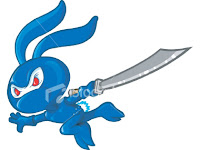

Darth Bill (in full
battle suit)
Vs.
The Lagomorph (with restored foot)
Hi, all my many adoring fans (or maybe not), it is I, the Sith with the mostest, Darth Bill once again. I have recovered very nicely from the vicious
"Dictionary Incident" of last week, but all is not well. I am still being stalked by the most fowl Lagomorph. For those of you out there who believe that the monstorious "Bunny" known as the Lagomorph is not real, I have the following video to show you. Take a look at it, then tell me I'm crazy:
Lagomorph
Not that I'm scared or anything (although those teeth are rather large). Well, enough of that, lets talk about great reads.
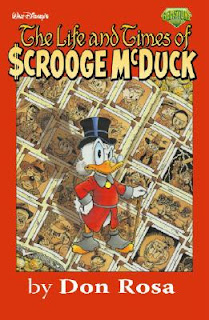 The Life and Times of $crooge McDuck by Don Rosa – If you are a fan of Uncle Scrooge of Disney Fame and of his famous relatives Donald, Huey, Louie and Dewey, this Graphic Novel is a read that you will really enjoy. In this Graphic Novel we meet Scrooge McDuck when he is but a wee lad living with his parents and two sisters in Scotland. The family is extremely poor, which is a situation Scrooge vows to change and make them all fabulously rich and wealthy. The story tells of how he makes his great fortune. The story follows Scrooge throughout his life as he makes his way to many different places and locales across the globe in the search for his fortune. Some of the many places and jobs he takes are America’s mighty Mississippi as a Riverboat Captain, its Wild, Wild West as a Cowboy, a Prospector in the American West, the wilds of Africa, down under in Australia, the great Klondike and many other locations. Along the way he makes many friends and enemies and also has many grand adventures. This book is great fun and the art work outstanding, so do yourself a favor and give it a read.
The Life and Times of $crooge McDuck by Don Rosa – If you are a fan of Uncle Scrooge of Disney Fame and of his famous relatives Donald, Huey, Louie and Dewey, this Graphic Novel is a read that you will really enjoy. In this Graphic Novel we meet Scrooge McDuck when he is but a wee lad living with his parents and two sisters in Scotland. The family is extremely poor, which is a situation Scrooge vows to change and make them all fabulously rich and wealthy. The story tells of how he makes his great fortune. The story follows Scrooge throughout his life as he makes his way to many different places and locales across the globe in the search for his fortune. Some of the many places and jobs he takes are America’s mighty Mississippi as a Riverboat Captain, its Wild, Wild West as a Cowboy, a Prospector in the American West, the wilds of Africa, down under in Australia, the great Klondike and many other locations. Along the way he makes many friends and enemies and also has many grand adventures. This book is great fun and the art work outstanding, so do yourself a favor and give it a read.
 The Boy who Dared: A Novel Based on the True Story of a Hitler Youth by Susan Bartoletti – This is an inspiring story about a teenage boy named Helmuth growing up in Germany as Hitler rises to power and the Nazi Regime comes to power. At first Helmuth, his family and friends are inspired and thrilled as Hitler rises to power with promises to the German people of a better life, which has not been that great since the end of World War I in which Germany was a loser. However, things quickly change as Hitler starts persecuting the Jews in Germany, taking away Germans' personal rights, invading surrounding countries and arresting any Germans who speak out about the Nazi Party or himself. When these things start to happen, Helmuth and some of his friends start to stand up to the Nazi Government and the lies it spreads. This is very dangerous as such acts can lead to imprisonment or worse. This story is based on the true story of Helmuth Hubener and does depict some of the very sad things that happen in war and under dictatorships, but it is an important story that should be told.
The Boy who Dared: A Novel Based on the True Story of a Hitler Youth by Susan Bartoletti – This is an inspiring story about a teenage boy named Helmuth growing up in Germany as Hitler rises to power and the Nazi Regime comes to power. At first Helmuth, his family and friends are inspired and thrilled as Hitler rises to power with promises to the German people of a better life, which has not been that great since the end of World War I in which Germany was a loser. However, things quickly change as Hitler starts persecuting the Jews in Germany, taking away Germans' personal rights, invading surrounding countries and arresting any Germans who speak out about the Nazi Party or himself. When these things start to happen, Helmuth and some of his friends start to stand up to the Nazi Government and the lies it spreads. This is very dangerous as such acts can lead to imprisonment or worse. This story is based on the true story of Helmuth Hubener and does depict some of the very sad things that happen in war and under dictatorships, but it is an important story that should be told.
Well give these books a try and let me know what you think!!!
Take it easy guys and beware the Lagomorph,
Bill





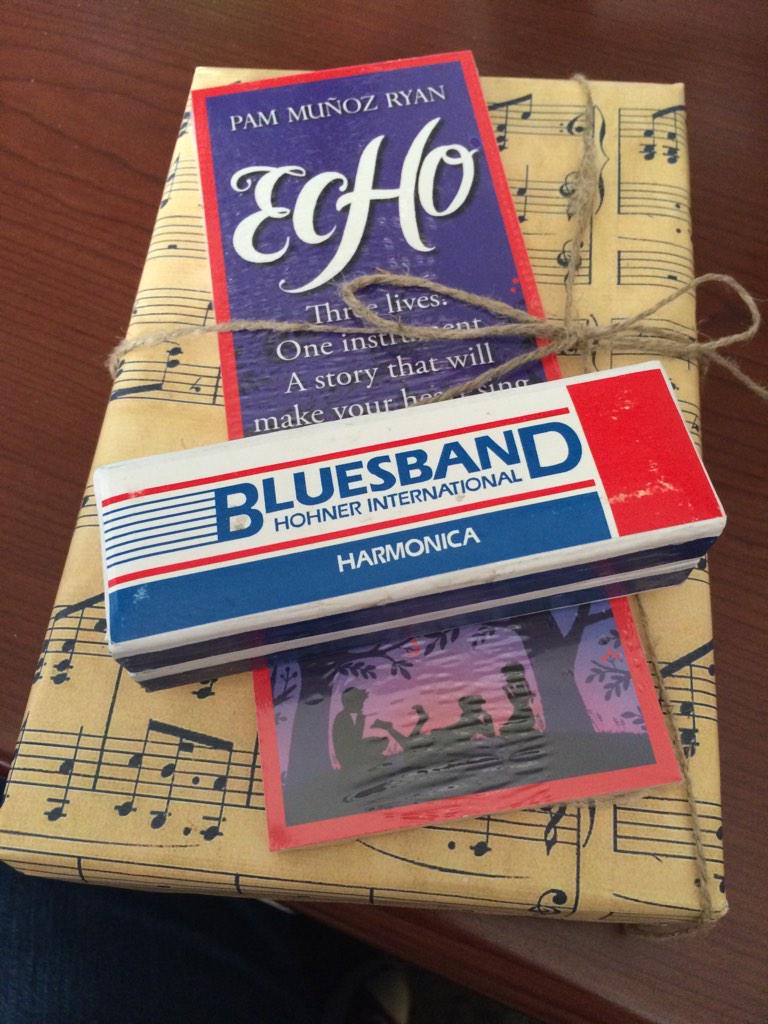




 Universal Studios has acquired the movie rights for In the Garden of Beasts: Love, Terror and an American Family in Hitler’s Berlin by Erik Larson.
Universal Studios has acquired the movie rights for In the Garden of Beasts: Love, Terror and an American Family in Hitler’s Berlin by Erik Larson.





Very thoughtful interview - thanks!
Looking forward to checking this book out.
Great interview! I am always so impressed with artistic interpretation of the written word and how the artist/illustrator approaches the work. Leland, congrats on your accomplishment and I look forward to the other books in the series. Lisa, fabulous questions! Thanks to both of you for participating in the Sydney Taylor Book Award blog tour!